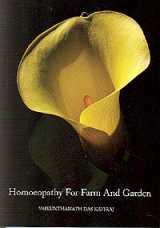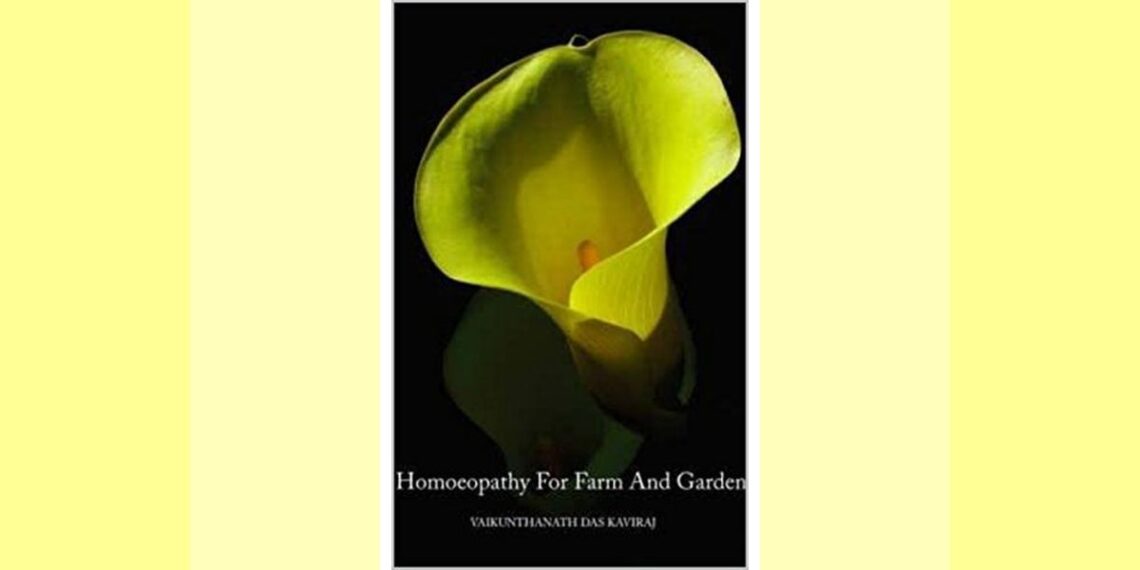
Author: Vaikunthanath Das Kaviraj
Mark Moodie Publications, Gloucester, UK;
2006, 191 pages, softcover, $35.00.
ISBN 0-9517890-5-8
Reviewed By: Tony Scofield
———————————————–
VAIKUNTHANATH DAS KAVIRAJ began his homeopathic work with plants in Switzerland in 1986 when a friend suggested he try treating a row of apple trees that suffered from bright red rust. To everyone’s surprise, the homeopathic remedy Belladonna cleared the rust and left a much better-tasting apple than the trees had produced before. This experience inspired years of subsequent research in Australia and Europe, which form the basis of this book.
The first quarter of the book consists of a brief review of homeopathy and agriculture. The author begins by quoting sections of Hahnemann’s Organon and putting agriculture into this context. Throughout his discussion, he puts the plant at the center of the treatment regime and, when discussing control methods, he does pick up on an important point that even “organic” control methods miss the point of the real problem-the fact that plants are still being attacked.
The plant is obviously having a problem and it needs to be treated rather than the pests and diseases attacking it. Organic farmers would go further, perhaps, and say that the soil or local environment is at fault and that these need to be addressed first. But, the plant is the organism which manifests changes as a result of soil deficiencies and provides the means of selecting suitable remedies, so it is not surprising, perhaps, that this is the obvious target for treatment.
The author attacks “chemical” farming and genetic engineering and highlights the phenomenon of insects developing resistance to the pesticidal qualities of genetically modified crops. Kaviraj contrasts these problems with the advantages of homeopathic treatment: only one dose is usually required so it is economical in terms of labor, and cost of the remedy is negligible; only minute doses are used so there are no residue problems; no resistance develops; and finally, the plant is treated, not the disease.
The author is keen on intercropping and companion planting and uses remedies of suitable companion plants to protect against pests and diseases pertaining to them. He also, not surprisingly, uses micro- and macro-nutrients (e.g., boron, potassium, phosphorus) as homeopathic remedies.
The first part of the book ends with a brief review of the structure of the soil and the nutrients therein, and of plant structure. Finally, instructions are given on how to use the remedies-they are prepared in water using the 6X potency and sprayed onto plants. The bulk of the book consists of a Materia Medica in which a “clinical description” of each remedy details the symptoms and/or pests and diseases. Also a “general description” gives the history of each remedy’s use and indications.
Further details such as the appearance of plants and their various parts, relations with other remedies, and antidotes are often given. At the beginning of this section, I would have found it interesting to read about the author’s own proving work and been given more information about where he obtained other details for the Materia Medica because the book implies that it did not all come from his own experimental work.
The book concludes with a Repertory where conditions can be matched to remedies. The author has accumulated an enormous amount of useful information here in a groundbreaking book. The Materia Medica and Repertory are easy to follow and the selection of a suitable remedy should not pose too much difficulty. This technique is certainly worth trying as it is neither expensive nor time-consuming and will not have an adverse effect on the environment.
This article originally appeared in the July/August 2007 issue of Homeopathy Today, a publication of the National Center for Homeopathy, and is reprinted here with permission. For subscription and membership information, visit www.NationalCenterForHomeopathy.org
To Learn More:
Mark Moodie, publisher of Homeopathy for Farm and Garden, has created a website to collect and share information about using homeopathically-prepared substances for plants and related subjects (e.g., biodynamic gardening). Visit www.considera.org.
Buy Homeopathy for Farm and Garden by V.D. kaviraj





